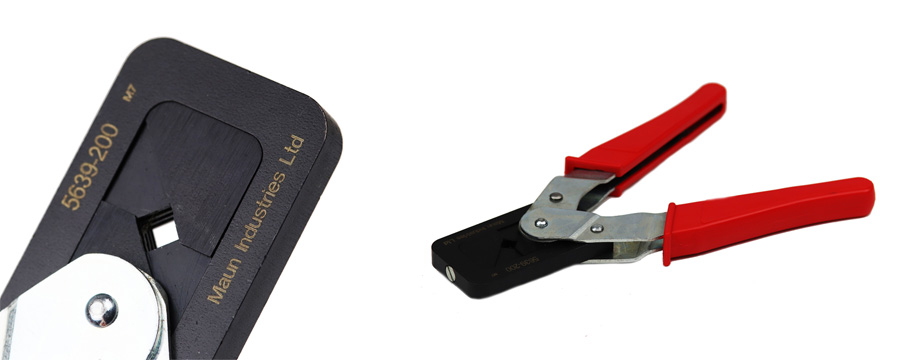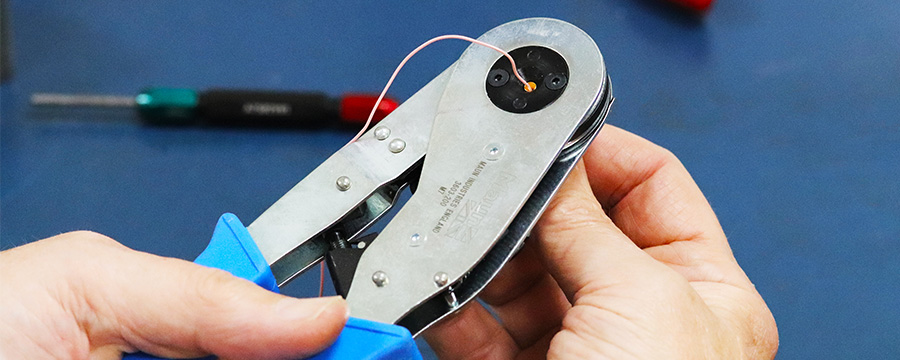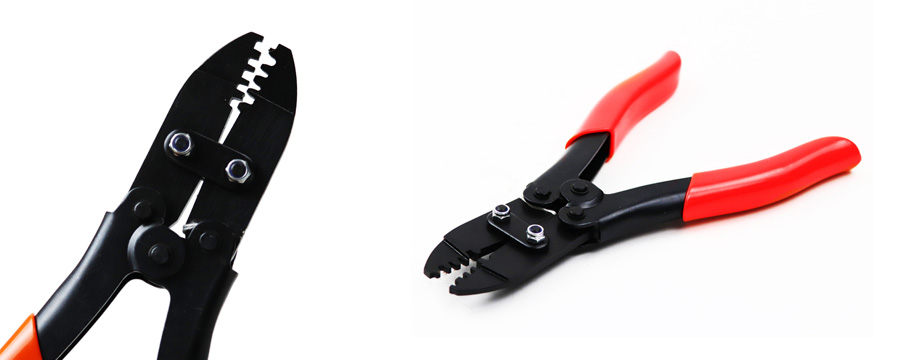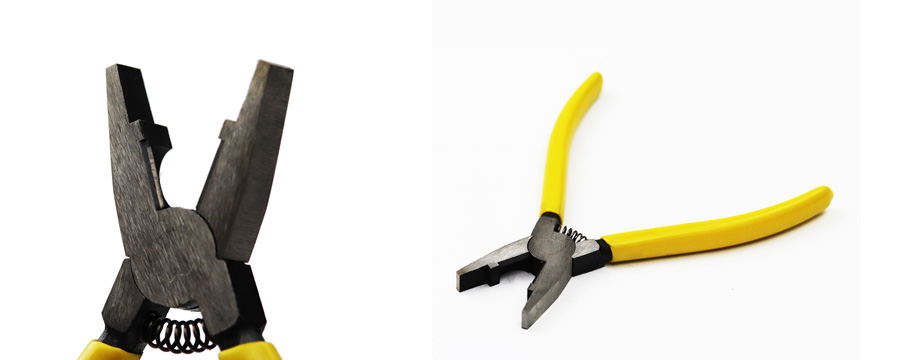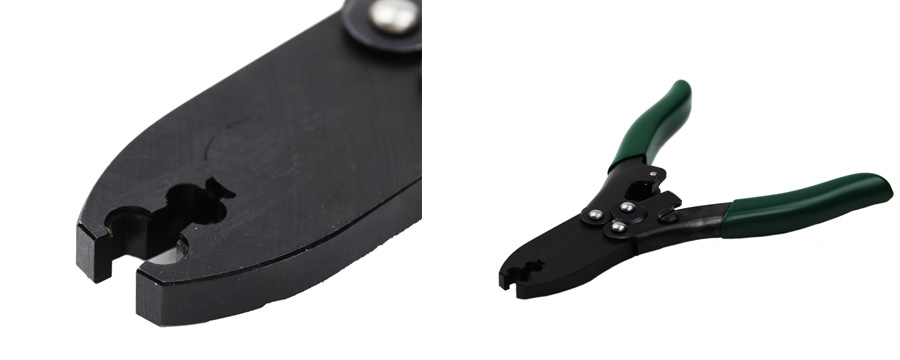What is a crimping tool and how are they used?
6th Nov 2023
If you want to join connectors and cables, then you need to know about crimping.
But how do you crimp, and what type of tool do you need to do it?
In this post, we'll go into what crimping is and which tool you'll need to get your job done.
What is crimping and what is a crimping tool?
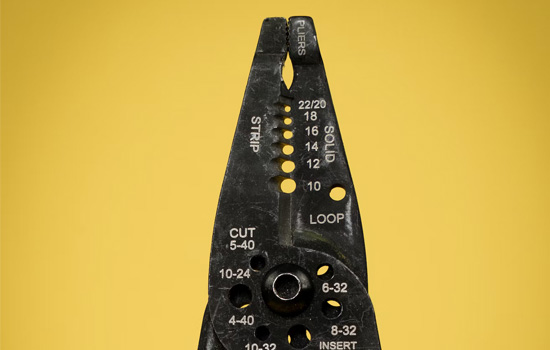
Crimping is a way of joining pieces of metal or other ductile material by deforming one or both of the pieces to hold the other, and this deformity is known as the "crimp". A crimping tool is the tool used to deform the material and create the connection.
Crimping is commonly used in electrical work, to attach
wires together or wire to other connectors. "Crimp connectors" is the
general name for the fittings that attach to the wire using this method, which
usually have an insulated sleeve attached to a metal connector.
The purpose of
the crimping tool is to form a secure connection that is properly sealed from
any gas or moisture, preventing shortages or faulty electrical connections. It allows electricians to form a solderless connection between two wires, or to terminate a strand of wire.
Crimping is also used in manufacturing, by mechanics and
engineers who crimp a wide range of different things.
How to use a crimping tool
To start crimping, you will need the following:
- Wire
- Connector
- Wire Stripper
- Crimping Tool
Here's how to use a crimping tool:
- Strip the insulation from your wire to leave enough room for the crimp connector to slip onto the end. You can use a wire stripper for this.
- Twist the end of the wire to make the end firmer and allow for a better connection.
- Insert the connector into the crimping tool and gently hold it.
- Insert the wire into the crimping connector, then firmly apply pressure. If using a ratchet crimping tool, it will release automatically when the crimp is made, so you likely won't have to squeeze as hard.
- You can test a bad crimp by pulling apart the connector and wire to see if it fails. It's always better for a crimp to fail before you've installed it, than afterwards.
What types of crimping tool are there?
There are many different types of crimping tools, all with different uses.
Here are the main types:
Bootlace crimping tool
Designed to crimp bootlace ferrules/crimps, which are metal tubes attached to a colour-coded insulation collar.
They're often used in screw terminals to stop multiple core wires from splitting and can handle a range of popular wire sizes.
Choose a high leverage one, such as the Maun Bootlace Ferrule Crimper, to get a good crimp without tiring out your hand. You can also choose the plier version to crimp a wider range of sizes.
Thin cable precision crimping tool
When you're working with thin cables, you don't have much margin for error, which is why traditional hand crimping tools can create problems.
The solution to this is to use a crimping tool with a ratchet feature, such as this one, that helps to control the crimp to remove human error from the process, ensuring a good crimp every time, even with smaller cables.
Crimping tool for QM & IP68 connectors
These tools are designed to crimp QM connectors and IP68 connectors, which are ideal for mains control lead connections, as well as small transmission systems.
This tool can handle QM connectors up to 24 AWG wire size and IP68 connectors up to 28 AWG wire size, making it a versatile choice.
Crimping tool for splice connectors
If you're looking to crimp splices, either gel-filled or butt splice connectors, then you need a proper tool for it, as opposed to a generic crimping tool.
This Scotchlok™ Crimping Plier handles both Scotchlok™ 8A and 8B splice connectors, and has a return spring to make it easier to handle.
Crimping tool for coaxial cable
Coaxial cable is a type of transmission line used to carry high-frequency signals, such as broadband internet, and has an inner conductor cable surrounded by a conducting shield, making it difficult to crimp.
Crimping tools for this type of cable tend to come in different categories depending on the coaxial cable impedance (calculated in Ohms Ω), so make sure to get one that matches your cable type.
Here are some suggestions:
Can you crimp wires with pliers?
No, you can't crimp with pliers, because they won't create the proper cold weld connection that a crimping tool will. A poor crimp can result in air and moisture getting inside the connection, which can lead the connection to fail. Instead, invest in a specialist crimping tool.
Which is the best crimping tool?
The best crimping tools are manufactured by Maun because:
- They have been specifically designed for different crimping connectors.
- They are engineered and made in England to produce secure joints.
- They offer high leverage action so you have to use less pressure.
- Maun has a long history – they've been producing tools since 1944.
Is it better to crimp or solder?
Crimping usually offers a stronger and more reliable connection than soldering, because soldering can degrade over time, and crimping is generally easier to do. It's a lot easier to crimp when you're in a hard-to-reach place, such as reaching wiring in a ceiling or under floorboards.
How do you undo a crimp?
It's almost impossible to undo a crimp, and if you do, the
second crimp is likely to be unreliable and may degrade over time. Your best
option is to cut the wire, and then extend it if it's now too short.
Conclusion
We hope you found our article about crimpers and how they are used useful. If you have any questions, we're always available for comment.
Read our related posts below:
- Best Maun Crimping Pliers & How to Use Them
- What is a Crimping Tool and How are They Used?
- Best Wire Cutters
- Best Side Cutters
- best bootlace ferrule crimper
- The Best Tools for Electricians to Make Every Job Easier
- How To Cut Wire with Pliers
Enquire about Trade
orders or request a full catalogue by emailing
enquiries@maunindustries.com


